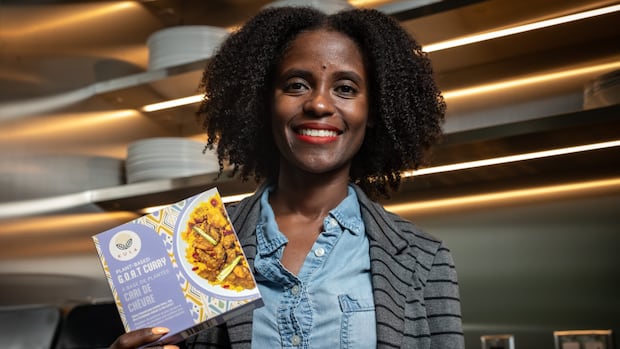What On EarthSmall businesses going net zero? In THIS economy?
Going net zero isn’t easy — at least, not in this economy. Just ask Asha Wheeldon.
Since she started her business she’s had to endure COVID-19, inflation and the current trade war with the U.S.
“We are definitely shaken to our core to be able to maintain the mission,” Wheeldon told What On Earth guest host Stephanie Skenderis.
As the owner of Kula Foods in Vancouver, Wheeldon sells Afro-Caribbean-inspired, plant-based meals, with a focus on local ingredients and sustainability.
And she’s one of many business owners who are grappling with the desire to go net zero while operating a profitable business.
Canada hopes to get to net zero emissions by 2050, meaning it hopes to balance how much greenhouse gas emissions are produced with how much is being removed from the atmosphere. And with more than one million small businesses in Canada, it will take effort from owners to make that happen.

According to estimates from the Bank of Canada in 2023, small to medium-sized enterprises generate 52 per cent of all greenhouse gases produced by Canadian businesses, which is equivalent to 41 per cent of Canada’s total emissions.
But according to Jasmin Guénette, vice president of national affairs for the Canadian Federation of Independent Businesses, not every small business is on board with reaching that goal.
“Certainly, right now, the business climate is difficult. And many small business owners are concerned about the future of their company,” said Guénette.
“Because there’s so [many] priorities on the day-to-day front, that sometimes it is difficult for businesses to consider making changes in order to achieve net-zero.”
Why is it hard?
Wheeldon’s journey to net zero has been a long and winding one, and she’s had to say no to opportunities that may have increased profit because they didn’t fit with that vision. One of the biggest roadblocks on that path has been packaging.
She started with reusable packaging, like jars, which she could take back from retailers after they were used.
“When we were just starting off with just a few accounts, I wouldn’t say manageable, but we were able to continue,” said Wheeldon.
But as they took on more clients, that became difficult. So they started using compostable bags. Then they became reliant on customers taking action, and since composting regulations differ between provinces and cities, that wasn’t easy either.
“Unless our customers specifically bring it to a particular facility and really be committed to that, we can’t compost these flexible bags easily,” said Wheeldon.

Customers committed to the net-zero cause are getting harder to find, says Wheeldon, because they are making decisions based on cost, not climate.
“It has been a drop, definitely. Folks are having to decide based on affordability as well. And so that is a consideration, and we’ve seen a loss in revenue as well, just like from two years ago,” said Wheeldon. “It’s a reality right now.”
Why and how to take action
Whether customers come on board or not, Priyanka Lloyd says there needs to be a sense of urgency to go net zero.
“I think the reality is that we, as a society, can’t afford not to,” said Lloyd.
“In order to successfully get to net zero we need to transition our economy and we’re not going to get there without transitioning the bulk of the economy, which is what small and medium-sized businesses represent.”
Lloyd was the executive director of Green Economy Canada at the time of her interview with What On Earth, but has since been replaced in that position by Matthew Lynch.
Green Economy Canada is a national nonprofit that works with businesses that are interested in reaching net zero.

Lloyd says there are tangible financial benefits to going net-zero, such as becoming more energy efficient, which can cut the cost of that monthly power bill.
And even though business owners such as Wheeldon say they are seeing less of a mandate from customers, Lloyd expects that to change over time, as more people make a greener future their priority.
“I think that there’s some awareness building that needs to be done to show businesses that taking action to reduce your emissions is actually smart business,” said Lloyd.
“It’s not just a feel-good exercise, but it can actually support you in becoming more efficient and productive and keeping more money in your pocket.”
Lloyd acknowledges there are upfront costs with upgrading infrastructure, but says there is “low-hanging fruit” that businesses could pick at.
There are also provincial and federal rebates and grants, around programs such as energy efficiency and electrical vehicle charging stations, which Lloyd says can make a big difference.
But even as businesses move toward net zero, Lloyd says that government needs to do its part as well, and make upgrades around energy infrastructure.
“These things are going to be really important to ensure that Canadian small businesses are set up for success and moving towards net zero,” said Lloyd.
That government support and collaboration is key, says Wheeldon. If that doesn’t happen, she says it’s going to be difficult for small businesses like hers to reach that goal of net zero, even if they really want to.
“I can tell you from my small business community, most of us want to do the right thing. We want to be part of the solution,” said Wheeldon.
